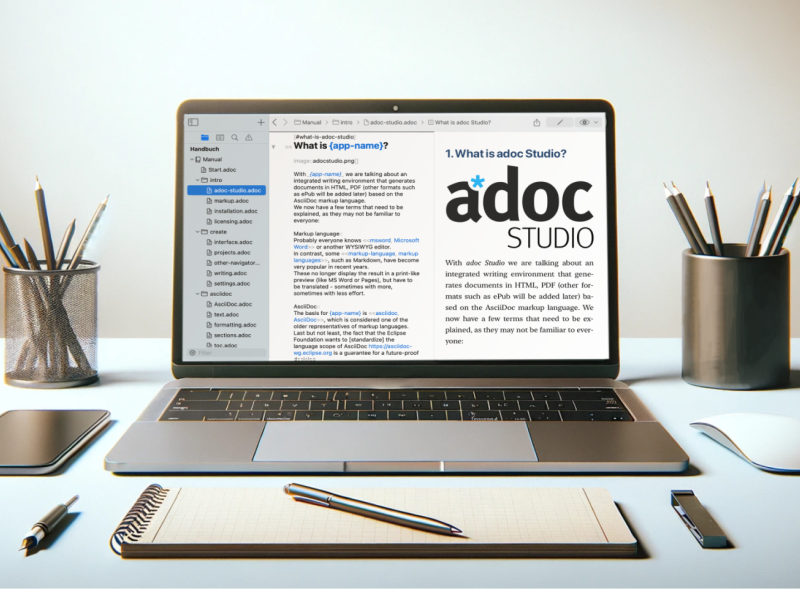Learn about the definition, purpose, goals and principles of technical writing in contrast to other writing styles.
Technical writing - an industry in transition
Technical writing has evolved from a narrowly defined discipline into a comprehensive and diverse field. This is reflected not least in its definition. Originally, technical writing was defined as "the practice of documenting processes". This is how the field is explained in various textbooks. It is emphasized that processes and procedures must be recorded and described. Thanks to these principles, processes are reproducible and can therefore be standardized. The aim of technical documentation is therefore to ensure or even optimize process quality.
Which documents are created according to this principle?
According to the traditional definition of technical writing, a large number of documents have been created that primarily document technical or scientific processes. These include, among others
User manuals: instructions that help users to use products or systems effectively. In our blog you will find a sample project for a manual in AsciiDoc.
Laboratory reports: Detailed descriptions of experiments, including methodology, results and conclusions.
Package inserts: Information on the correct use and safety instructions for drugs or chemical products.
Dissertations: Comprehensive scientific papers that present new research findings.
Academic articles: Articles in professional journals that present specialized research findings.
Presentations and research proposals: Documents that describe and justify planned research projects.
Brochures and product specifications: Promotional material and technical descriptions detailing product features.
Style guides: Guidelines for the design and writing style of documents.
A new definition was needed
The list already shows that there is a whole range of different document types that a technical author could write within the scope of their discipline. The old definition could no longer do justice to the variety and scope of documents that are created today. For this reason, an expanded definition was developed that better describes the field.
Technical communication involves the delivery of clear, consistent, and factual information—often stemming from complex concepts—for safe and efficient use and effective comprehension by users
This modern definition recognizes the wide range of documents that go beyond pure process documentation. Complex concepts are explained clearly and comprehensibly for the user. This results in one thing above all: the role of the technical writer has become indispensable in today's society.
 adoc Studio
adoc Studio
Organize, Write and Share.
Documentation in AsciiDoc.
Organize, Write and Share.
Differences to other writing styles
Technical documents aim to explain concepts clearly and simply. The user's problems are solved efficiently and described in precise words. Content should be short and easy to understand, without detours or embellishments.

In contrast, other writing styles pursue different goals. Copywriting, which is often used for advertising purposes, has an entertaining character or is intended to convince the reader of something. More embellished language is often used to arouse the reader's emotions. In journalistic texts and fiction, the entertainment character is even more important.
If technical documents were to be created according to these principles, this would have clear disadvantages for users. These documents are not devoured as a whole for entertainment. They are used for targeted searches. A user has a problem or a question and is looking for a specific answer: How do I install the device? When does the warranty expire? Where can I find spare parts?
Advantages of technical documentation

Technical documentation serves a clear purpose and offers numerous benefits. It helps to make informed decisions and reduce risks and accidents. It also saves the manufacturer money by intercepting support requests through the document. As a result, less personnel is required for customer support. It also promotes the use and recommendation of a product, improves product quality and supports scientific progress by helping to understand technical processes.
As in any discipline, the implementation must be right. Otherwise, the benefits quickly become the opposite and users flood the support team with queries, for example, because the documents are incomprehensibly worded. With the following 6 principles, you can ensure that your documents are good:
6 principles of technical documents
A high-quality technical document is characterized by several key properties:
Correct: The information must be accurate and reliable.
Complete: All necessary information must be included.
Usable: The documentation must be accessible and understandable for the end user.
Clear: The language should be clear and understandable.
Concise: Information must be to the point, without unnecessary detail.
Consistent: Consistency in style, language and layout promotes understanding and user-friendliness.
As we have learned, technical writing goes far beyond the mere documentation of processes. It plays a crucial role in modern society by making complex information accessible, contributing to safety and supporting technological progress. The ability to communicate effectively technically is therefore a valuable skill in many industries and a key to success in today's technology-driven world.
But theory is only half the story. Technical writers need the right tool for implementation. adoc Studio is an integrated writing environment based on AsciiDoc. Create different outputs from one document and navigate easily through complex documents. You always write your texts in a powerful but easy-to-understand markup language. You can find more information about adoc Studio here.
Tagged
You might also like
-
How to get into Tech Writing?
- Antoni Cherif
- Published on
-
AsciiDoc in Comparison
- Marvin Blome
- Published on



